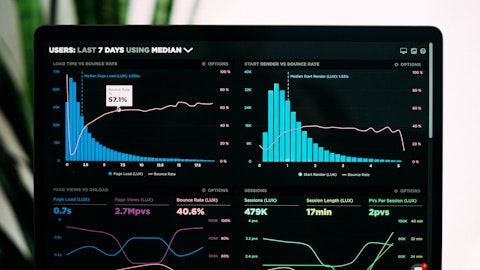Deane Dray: That’s great. That’s exactly what we’re looking for. Thanks.
Operator: Our next question today comes from Scott Davis of Melius Research. Please go ahead.
Scott Davis: Good morning, guys. Congrats, Rob, and good luck, Jason, et cetera. I wish you guys well, but . Jason you get to work a few more years with Neil. Good luck.
Jason Conley: Fair enough.
Neil Hunn: Thank you.
Scott Davis: I can say that, I guess. But anyways, I don’t want to climb in a minutia here, but I know there’s no one particular asset that moves the needle in a huge way. But can we walk back and talk a little bit about PowerPlan? I mean you mentioned the narrower product focus. I think, I heard you say, which didn’t really understand what that meant. And the cloud rollout, again, like is that — how relevant is that to the business? And — but maybe if we just go back and you can explain to us again what kind of drives PowerPlan? And I’ll just leave it there and leave it behind.
Neil Hunn: I appreciate the opportunity to talk about, anyway our businesses, it’s been a while since we’ve been able to do a double-click on PowerPlan. So just remind you what they do, right? So PowerPlan software and services live at the intersection of the financial system and the asset tracking system for these large utilities, investor-owned and public utilities. And when the PowerPlan software has a perfectly curated view of what the assets look like inside our customer base. When you have that perfectly curated view and these assets are constantly being updated and changed, they’re not static, right? And so that’s why you have to live between these two systems. And we have this perfectly curated view of what the assets are, then you get the most appropriate tax treatment you can, the most appropriate lease accounting and a series of other financial benefits associated with that.
We bought the business. The business was doing that, but it was also reaching outside its core customer base and the core products I just described, looking for growth sort of in all the wrong places, if you will. And then we — what we did when we did our strategy work with them going back probably a year, 1.5 years ago is the amount of opportunity inside the core of what they do was large enough to support the growth thesis for many years to come. So it’s just refocusing back on the core. That’s a common theme. We talked about that. I think you’ll see that increasingly more inside of Ropers as we do our strategy work, right? So not getting too far away from the core and getting distracted. So that’s what they’ve done. The first impact of that is they now have this 100% SaaS solution for their principal product fixed assets just released in Q4.
And we’re excited by that because as you lift and shift your customer base from an on-premise to a cloud solution, there’s a tremendous value capture opportunity, and it will unlock some growth for the business.
Scott Davis: And can you get pricing in the process? Or is this just more about retention?
Neil Hunn: No, that’s the value unlock, right? So we’re doing more for our customers with the SaaS solution, right? So we’re not just hosting it. There’s more features. You’re on the latest release, where certainly, we know how to operate our software ourselves better than third parties. And so it’s the efficiency and the uptime is higher. And as a result of all that, you do get price. We’ll see we talked about there’s roughly $900 million in legacy on-premise maintenance in our revenue base. And as that is lifting and shifting to the cloud over a long arc of time, that should lift and shift north of 2 times, right? So there’s $1 billion of growth that’s latent inside the portfolio as we lift and shift that on-premise maintenance to the cloud.




